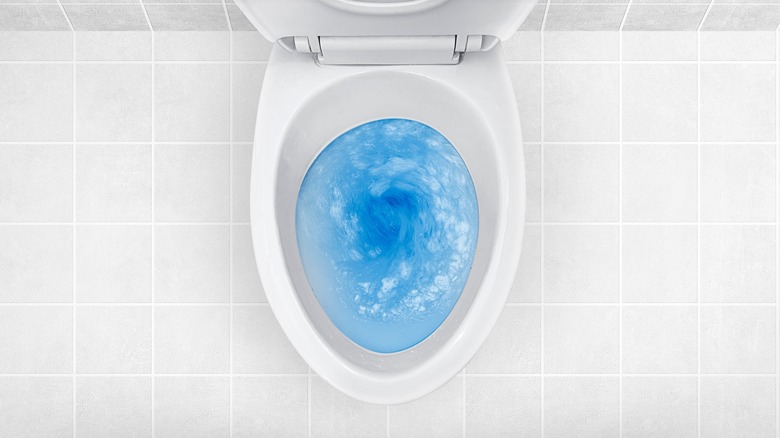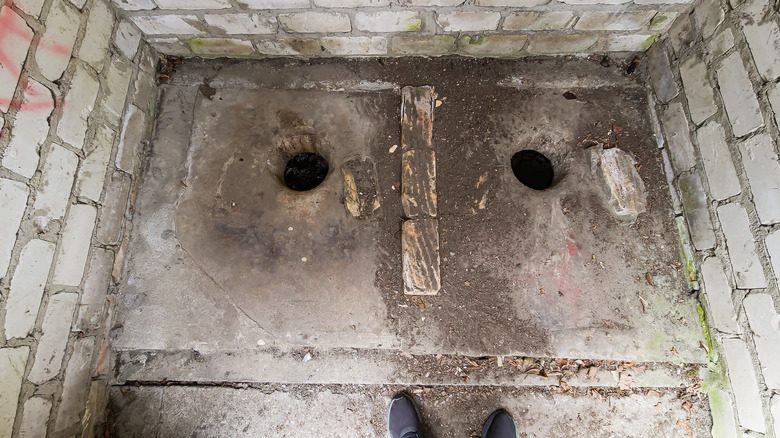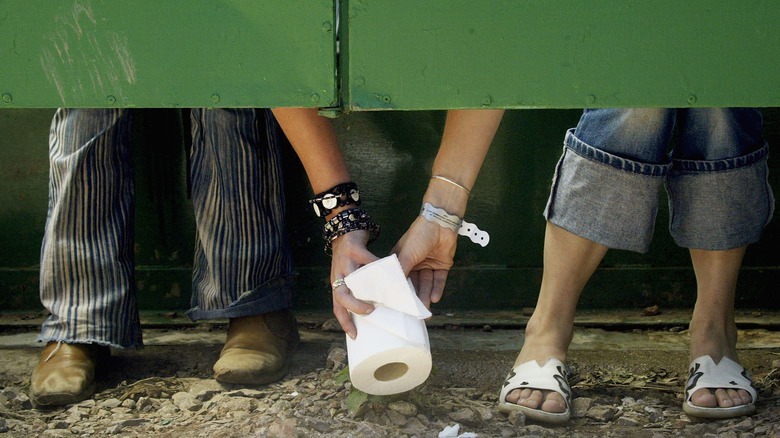Researchers In China May Have Discovered The Oldest Flush Toilet In The World
Oh, toilet! Receptacle of unwanted bodily refuse, chalice of once-potable water, and ceramic holster of swirly-flushed whirls, we thank you! Despite all risks of pipe blockage, face dunkage, and dark smearage, none of us would want to live in a world without our favorite floor-bound bathroom companion — believe it. What are the other options? Holes in the ground? Those fill up and stink unspeakable fumes. Holes in the ground surrounded by walls? That's an outhouse, and we've all been stricken by the ghastly interiors of those places, right? No, no. We need a bowl full of water for waste capture, some smoothly soft paper for wiping, and a little handle that makes it all go bye-bye.
Such luxurious conveniences — because that's what they are, let's be honest — aren't exactly old, longstanding mainstays in human households. Flushable, private, widespread, per-household toilets connected to a full sewer system? That's a 20th-century thing, as the British Association of Urological Surgeons says. And yet, as recently as 2015, TIME described a UNICEF report stating that one-third of the global population doesn't have flush toilets. Even more generally, in 2020, Statista reported that 46% of the world doesn't have fundamental sewage treatment, and 22% lacks sanitation services altogether. What's the lesson here? Be grateful, flushers.
So what are we to make of a 2,400-year-old flush toilet — an honest-to-goodness pipe-and-bowl flush toilet — discovered in China in 2022? It's real, it was used, and it was definitely a luxury good.
The most ancient of crappers
The story till now was a bit, shall we say, cleaner. As History recounts, we've got the Englishman John Harrington to thank for inventing the modern version of a flush toilet. This was back in 1596, and was basically a latrine with an on-demand flush mechanism that connected to a sewage system. Start with a typical poop pit — in this case a bowl coated with resin, pitch, and wax — and let it fill with the undesirables of up to about 20 different users. Then take 7.5 gallons of water — quite a lot in those days — pour it down, and wash it all away. See how easy that was? As the British Association of Urological Surgeons says, it took until 1775 for the watchmaker Alexander Cummings to invent the s-shaped pipe that trapped horrible smells down below, and 1861 for Thomas Crapper — whose surname lives on in comedy forever — to start implementing flushable commodes in royal abodes.
Now, however, we know that some folks had the bright idea of flushing away their excrement some 2,400 years ago during China's Warring States Period (475-221 B.C.E.) and the later Han Dynasty (206 B.C.E. to 220 C.E.). As CNN explains, the prototype flush toilet wasn't exactly a commonplace item. They likely belonged to societal elites, complete with servants to pour water into the tank and flush away the evidence. But at least it seems they flushed every single time.
High-class sanitation
The recent find comes to us via China Daily, as CNN says, and as such should be taken with an anti-propagandistic grain of non-state-sponsored salt. Nonetheless, we've got pictures of the old crapper, with looks like an off-kilter stone box propped up on a wooden rack. The stone part slopes down towards a hole, which connects to a pipe with a 90-degree crook that lets refuse flow to an outdoor pit — easy-peasy. The toilet, which is the only one of its kind ever discovered, was found in the remains of a royal palace at an archaeological site at Yueyang in Xi'an, Shaanxi province. The dwelling itself was likely used for "administrative affairs."
Liu Rui, researcher at the Institute of Archaeology at the Chinese Academy of Social Sciences, describes the find in precisely the humorous way you'd hope: "Everybody at the site was surprised, and then we all burst into laughter." Liu continued, "The flush toilet is concrete proof of the importance the ancient Chinese attached to sanitation," a statement which would have won awesome pun points if the toilet was made of concrete.
China Daily says that the archaeological site where the toilet was found has been undergoing excavation since 2012. Researchers are currently digging deeper and analyzing nearby soil samples for fecal matter that could provide insight into the diets of ancient peoples. Currently, the only thing they've discovered is ancient fertilizer, but there's been no mention of any connection between such fertilizers and ancient poop.


